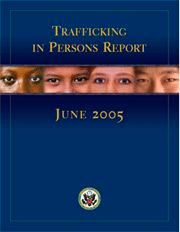The Trafficking Victims Protection Act (TVPA): A Landmark Legislation in the Fight Against Human Trafficking

Introduction
The Trafficking Victims Protection Act (TVPA), enacted in 2000 and reauthorized in subsequent years including a significant update in 2006, represents a cornerstone in U.S. legislation against human trafficking. This Act provided a comprehensive framework to address the issues of modern slavery, emphasizing the prevention of trafficking, protection of victims, and prosecution of traffickers. This essay delves into the key provisions of the TVPA, its impact, and the ongoing challenges in curbing human trafficking.
Background and Development
Prior to the TVPA, the United States lacked a comprehensive law specifically targeting the burgeoning issue of human trafficking both domestically and internationally. Human trafficking, encompassing forced labor, sexual exploitation, and other forms of servitude, required a targeted legislative response. The TVPA was introduced to fill this legislative void and to align the U.S. with its international commitments to combat modern-day slavery.
Key Provisions of the TVPA
The TVPA was groundbreaking for several reasons. Firstly, it provided a clear federal definition of human trafficking, distinguishing between sex trafficking and labor trafficking. It recognized that trafficking can occur without crossing international borders and can affect U.S. citizens and foreign nationals alike.
Secondly, the Act established the Office to Monitor and Combat Trafficking in Persons within the State Department, which is responsible for coordinating anti-trafficking efforts and preparing the annual Trafficking in Persons (TIP) report.
Thirdly, the TVPA enhanced the means for prosecution by creating new criminal offenses and tougher penalties for traffickers. This included the criminalization of attempted trafficking and the establishment of mandatory restitution for victims.
Finally, the Act focused on victim protection and support. It provided for the establishment of a T-Visa, allowing victims of trafficking to remain in the U.S. and assist in the investigation and prosecution of trafficking offenses. It also ensured victims’ access to social, legal, and health services.
Impact of the TVPA
The enactment and subsequent reauthorizations of the TVPA have had a profound impact on the fight against human trafficking. The Act has led to increased prosecution of traffickers and greater protections for victims. It has also raised public awareness about the realities of human trafficking, prompting other countries to take similar legislative actions.
The annual TIP report has become a crucial tool in global anti-trafficking efforts, providing an assessment of governments’ efforts to combat trafficking and serving as a diplomatic tool to encourage enhanced anti-trafficking responses worldwide.
Ongoing Challenges
Despite the successes of the TVPA, challenges remain. Trafficking networks have become more sophisticated, exploiting technological advancements and global economic disparities. There is a need for continuous adaptation of strategies to counter these evolving tactics. Additionally, ensuring consistent and comprehensive support for victims, including access to legal, health, and social services, remains an ongoing challenge.
Conclusion
The Trafficking Victims Protection Act stands as a testament to the U.S. commitment to eradicating human trafficking. Its comprehensive approach, encompassing prevention, prosecution, and protection, has significantly impacted the global fight against trafficking. However, the persistence of human trafficking as a global issue underscores the need for continued vigilance, innovation, and international cooperation to build on the foundations laid by the TVPA and move closer to a world free of modern-day slavery.

